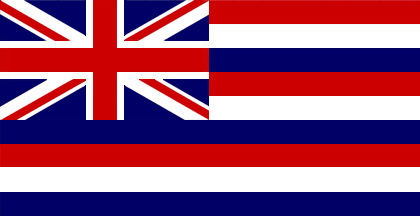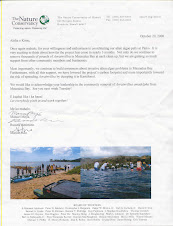Not language lessons in anyway, but 1 hour informal talk-story sessions in ʻōlelo Hawaiʻi at Kuliʻouʻou Beach Park on Sunday mornings. Topics would be open and free flowing. Just a group of friends talking story in a circle on beach chairs under a tree or at a picnic table. This would be for novices and fluent speakers alike. The individual intent for novices being to use Hawaiian regularly and become comfortable using it so that fluency can be obtained. For fluent speakers, to have others to speak Hawaiian with and to mentor novice speakers with your knowledge. The wider intent being to hear Hawaiian spoken more often in the public places of Hawaiʻi.
The only rule being that Hawaiian is spoken as much as possible and English is kept to a minimum. More fluent speakers can help novices express words in Hawaiian as necessary. Itʻs all for fun and for using ʻōlelo Hawaiʻi as it should be used in Hawaii nei.
No shame for novices, myself being one. Just come and speak the best you can. Thatʻs how we all get better at speaking and listening. It is preferred that some Hawaiian language basic skills and usage be known. Many of us have this but lack people to speak to regularly. Another intent of this endeavor is to help fill that void.
Hawaiian language usage should expand more widely above and beyond the schools and mānaleo speaking communities of Hawaii. There should be informal groups accessible to all who want to use Hawaiian language in every ahupuaʻa and district of Hawaii. With that being said, wouldnʻt spoken Hawaiian spread throughout our communities and be common and vibrant again as it was pre-1900ʻs. What do you think? Please post a comment or email your thoughts or interest in participating.
Holomua ka ʻōlelo Hawaiʻi i ka lehulehu!
Sunday, September 28, 2008
Seaweed Huki Tally for Pōʻalima, Kepakemapa 26

Fridayʻs seaweed pull tally was 2905 lbs. Mahalo nui to all from Mālama Maunalua & The Nature Conservancy who participated.
I believe the invasive algae that has been smothering out the native Hawaiian types of limu such as the nasty mudweed (avrainvillea) that we are pulling out is not deserving of being called "limu". So I call it "seaweed" and save the word "limu" for the maikaʻi native types of limu of Hawaiʻi.
If you look at the two bottom pictures, you can see the borders of where we have removed invasive seaweed and where it is still growing (top left corner of Pic. 1 & middle of picture in Pic. 2).
1.

2.

Sunday, September 14, 2008
Aloha nō e Leighton



Bradda Leighton was reunited with the ocean yesterday off Maunalua for the first since his prolonged illness over the last 4 years after suffering from a diving accident. Family and many friends were at Maunalua Beach Park to celebrate his life.
As a well know waterman, Leighton Look was remembered for his many talents including being an expert paddler and steersman, founder and coach of Hui Lanakila Canoe Club, expert carpenter, canoe builder and paddle maker, commercial fisherman, UH Manoa civil engineering graduate, Kalani High School football team linebacker in the early 1970's and many other things.
Leighton and his younger brother and my good friend Les helped me put in a nice big driveway at my folks house in Niu several years back. They also hosted many crazy parties including the biggest New Years eve parties with more fireworks than one could imagine. Leighton always would let my kids have as much fireworks as they wanted after their supply ran out. He always had coolers full of them. He would dive and fish days in advance of the parties and have the best food available with every imaginable seafood on the table.
Leighton will be really missed by his family, the paddling community & all the gang from Niu Valley who knew him since small kid time.
Aloha nō e Leighon a hui hou kākou i ka palekaiko o ko kākou Hakulani.



Wednesday, September 10, 2008
Yesterday's Limu Huki Tally
Monday, September 8, 2008
Ke Kuahiwi o Hawaii Loa

1.

2.

3.

Hawaii Loa ridge between the Ahupua'a o Niu and the Ahupua'a of Wailupe still displays many native plant species from the original native Hawaiʻi dryland type forests which once covered much of the land in this area.
Koa (pic. 3), Maile (pic. 5), ʻIlima (pic. 7), ʻŌhiʻa Lehua (pic. 6), Lama, Naupaka Kuahiwi (pic. 4) & ʻIliahi or Sandalwood (pic. 1 & 2) are just some of the native plants & trees that can still be found here.
The Sandalwood trade, the introduction of foreign plants and trees and the introduction of cattle in the 1800's changed the landscape to a drastic extent. For example, the Kiawe tree which was prevalent in the valleys and lower hills of this area before homes were built was brought in to Hawaiʻi. It was quickly spread all over the place by the cattle which ate the Kiawe beans. The amount of invasive guava on the ridge is alarming as it is in many other areas.
The park and trail head on Hawaii Loa ridge is now at a place in which we once as kids called the dust bowls. The dust bowls were giant eroded out areas of red dirt. The dust bowls were our final destination as kids after hiking up the ridge from the highway and up through where all those million dollar homes are now, or up the side of the ridge where the gorge is above Niu Valley Intermediate School and tennis courts.
In those days Pheasant could be seen flying from the bushes and wild dogs were in the mountains and deep in the valleys which made it quite spooky wondering if you would ever run into them while hiking. Our weapons of choice were pellet and BB guns to defend ourselves and shoot at stuff. I never ran into the wild dogs; however, my family saw them on occasion from a distance in the Niu Valley school grounds and adjacent hills in the 1950ʻs and early 1960ʻs. I did see large dog foot prints in the dust bowls periodically though. Also, the dogs would dig into the deep piles of ironwood needles and make dens for the pups. We saw these ironwood needle dens often in the dust bowls and surrounding areas of the mountain.
There was no trail than behind the dust bowls as there is today that leads up to the top of the Koʻolau mountains (top picture) where you can look over to the windward side of the island to Waimanalo & Kailua.
4.

5.

6.

7.

Monday, September 1, 2008
Limu Huki


Another nice harvest of invasive algae was completed on Friday, August 29 by members of Mālama Maunalua and with the support of The Nature Conservancy.
Approx. 3540 lbs of invasive algae were pulled from the reef in front of the Kuliouʻou/Paiko area. Cleared areas are slowly growing bigger; however, the work is only in the beginning stages.
We load bags of seaweed on the Kayak and push it to shore where we unload the bags, than wheel barrow it to the road and load it on trucks. The work is labor intensive but we always have lots of fun. Maybe at some point, we can get the Seaweed Super Sucker back on the reef and use that again to see how it compares to hand pulling.
Avrainvillea amadalpha (mud weed), Gracilaria saliconia (gorilla ogo) and Acanthophora spicifera (prickly seaweed) are especially thick types of invasive algae in this area. After the removal of the invasive algae, the goal is to restock this area with native limu like "Limu Manauea" and other native species in which many areas in Maunalua Bay were once famous for.


Kalauhaʻehaʻe


Kalauhaʻehaʻe also called Lucas Spring is located in the Ahupuaʻa o Niu (above). It is a historic site and a wahi pana. The Maunalua Fish Pond Heritage Center, the community and the University of Hawaii at Mānoa are actively working together at this time to preserve this site.
The goal besides saving the site is to restore it to its original pristine quality as a fish pond and to use it for cultural and educational purposes through the University of Hawaiiʻs Hawaiian Studies Department.
Much of the fresh water flow to the stream was cut off during the widening of Kalanianaʻole Highway approx. 10 years ago. Upon restoring the below ground fresh water flow from the mauka side of the highway, the pond could become productive again.
Also, it would also create a vast improvement in the adjacent Maunalua Bay area where efforts are ongoing by Mālama Maunalua. Data collection, fish monitoring, invasive algae removal and other community projects administered by Mālama Maunalua are underway to stop degradation and restore the pristine quality of the bay.
Subscribe to:
Posts (Atom)









